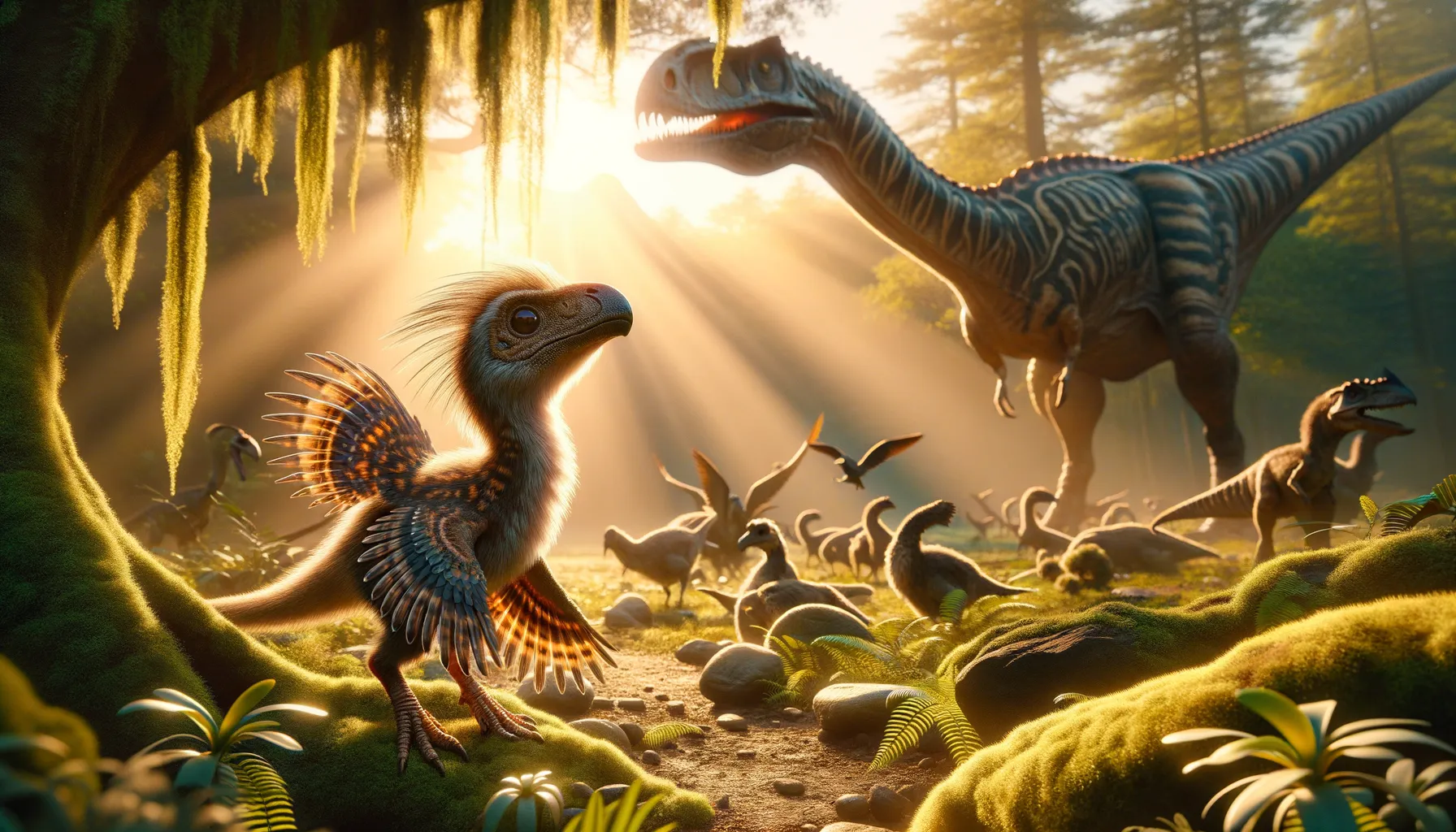
Palaeocursornis
Tiny dinosaur with bird-like mystique!
Period
Jurassic
Length
Around 45 cm long.
Height
Approximately 30 cm tall.
Weight
Less than 1 kg.
Palaeocursornis is a small and relatively lesser-known dinosaur from the Jurassic period. It is primarily known from limited fossil remains, which makes detailed understanding of its biology and behavior challenging. This tiny dinosaur fascinates paleontologists for its bird-like characteristics, suggesting evolutionary links between dinosaurs and modern birds. Despite the scarcity of its remains, Palaeocursornis offers valuable insights into the diversity and evolution of prehistoric life on Earth.
Diet
The diet of Palaeocursornis likely consisted of small insects and other invertebrates. Its small size and potential agility would have been advantageous for catching these fast-moving prey.
Hunting
Due to its diminutive size, Palaeocursornis likely relied on quick, agile movements to capture insects. Its hunting behavior might have been similar to that of small modern birds that rapidly dart for tiny prey.
Environmental challenges
Palaeocursornis might have faced challenges such as adapting to a fluctuating climate and finding adequate shelter. The Jurassic environment was dynamic, with flourishing plant life and many competing species, which would have posed survival challenges. Predation by larger dinosaurs would have been a constant threat as well, necessitating keen awareness and camouflaging abilities.
Speed
Moderate with limited information available.
Lifespan
Unknown due to scarce fossil records.
First discovery
Fossil first discovered in Europe, 1969.
Fun Facts
- Palaeocursornis was a bird-like dinosaur that lived during the late Jurassic period.
- Known for its slender legs, Palaeocursornis was likely a fast runner, helping it escape from predators.
- This dinosaur had long, thin bones, suggesting it was quite lightweight and possibly capable of short bursts of flight.
- The name 'Palaeocursornis' means 'ancient running bird,' which hints at its agile nature.
- Fossil evidence of Palaeocursornis was first discovered in what is now Switzerland, providing insight into the ecosystem of ancient Europe.
- Despite its bird-like appearance, Palaeocursornis had sharp teeth, indicating a carnivorous diet.
- Palaeocursornis is part of the avialan group, which includes some of the earliest relatives of modern birds.
Growth and Development
Specific details about the growth and development of Palaeocursornis are limited due to the insufficiency of fossil data. Like many small dinosaurs, it likely experienced rapid growth phases in its early life stages. Development patterns may have been influenced by environmental conditions and resource availability.
Habitat
Palaeocursornis inhabited environments that were abundant in plant life and insect resources. It would have thrived in areas offering plenty of cover, such as dense undergrowth or forested regions. The environment needed to balance providing protection from predators with access to sunlight and open ground for foraging.
Interaction with other species
Palaeocursornis likely had interactions with multiple species, serving both as predator and prey. In proximity to larger herbivores, it might have taken advantage of disturbed ground to find food. Its interactions with other small dinosaurs might have been competitive, especially in locations where resources were scarce.
Natural lifespan
The natural lifespan of Palaeocursornis remains unknown due to lack of comprehensive fossil evidence.
Reproduction
Reproductive behavior of Palaeocursornis is not well-documented. It likely laid eggs, like many small dinosaurs of its era. Nesting habits remain speculative, but it might have used simple ground nests possibly hidden in dense foliage for protection.
Social behaviour
The social behavior of Palaeocursornis is largely unknown; however, it might have been solitary or formed small groups for foraging. Social interactions could have been largely defined by competition for resources rather than cooperative behaviors. Vocalizations or visual signals might have been used minimally to communicate.
Fossil locations
Fossils of Palaeocursornis have primarily been found in parts of Europe. The limited number of fossil sites makes it a rare specimen in the paleontological record. These discoveries are essential in piecing together the ecology and evolutionary history of smaller dinosaur species in the Jurassic period.
